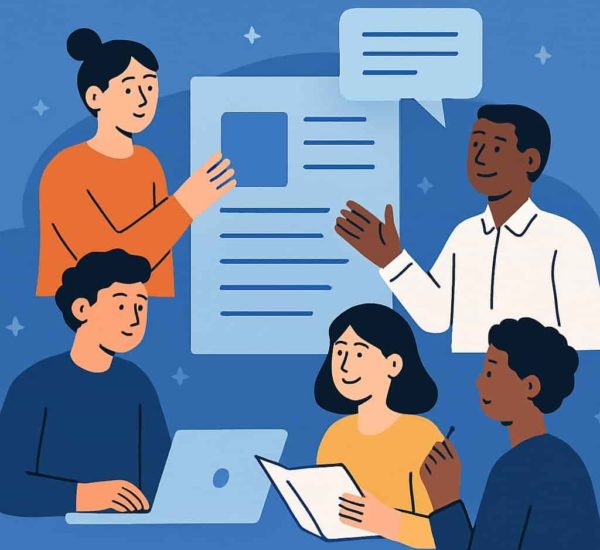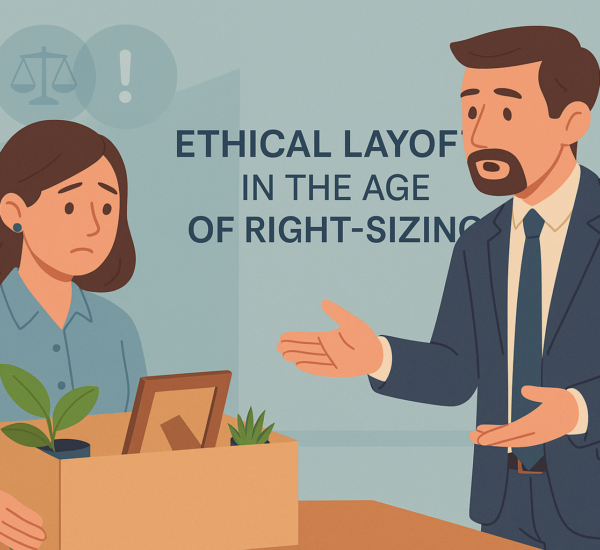Simplifying Maslow’s hierarchy of needs theory, Clayton Alderfer introduced a theory called ERG theory. Alderfer was an American psychologist who proposed this theory back in 1969. In this theory, E stands for existence, R stands for relatedness and G stands for growth, hence the term ERG theory.
In this article, you will discover some employee motivation theories with a special focus on ERG theory. Additionally, you will see its similarities and differences with Maslow’s theory of needs and how these motivation theories can be applied to the workplace.
Employee Motivation Theories
Some employee motivation theories are given below:
1. Alderfer’s ERG Theory
According to Alderfer’s ERG theory, a person has three core groups of their needs. These groups can be classified as existence, relatedness, and growth. These core groups are closely related to what Maslow gave in his needs theory, also known as the hierarchy of needs theory. According to both theories, a person strives to meet their basic needs throughout their lives. Once these needs are fulfilled, they strive to reach a higher level of needs. In Maslow’s theory, this stage is called self-actualization. Let’s break down the three groups of ERG theory which is a simplified form of Maslow’s theory.
Existence
In alignment with Maslow’s basic needs which he categorized as physiological needs, Alderfer called them the existence needs. Maslow’s physiological needs stage concerns itself with basic human needs such as air, water, food, and shelter. Alderfer gave a similar idea in terms of employment, property, and health.
Relatedness
In Maslow’s hierarchy of needs, the second level is that of belongingness to others and having social relationships. On a similar note, Alderfer’s relatedness speaks of the same idea. According to both theories, humans need to have social interactions which help them live a healthy life. Secondly, another important thing humans strive to gain is the respect of others.
Growth
The third complement of ERG theory is growth. Humans need to grow in terms of having self-esteem, confidence and focus on personal development. It is in this phase that a human being strives to become the best versions of themselves. In Maslow’s terminology, a person realizes their abilities and potential and ultimately gets on the road to self-actualization. In other words, Alderfer’s growth need category corresponds to Maslow’s self-esteem and self-actualization level.
How Does ERG Theory of Motivation Work?
So how does the model work? Alderfer’s ERG theory suggests that a person may be motivated by different levels of needs at any given time. Any need which has a high priority for them can change from time to time. In other words, a person’s priorities, needs, and motivations aren’t constant. They can go from needs of existence to relatedness to growth. The needs affect a person in the following ways:
Satisfied Needs
Maslow’s theory suggests that a person can move to a higher level of needs only if their lower needs are met. For example, if an individual is deprived of basic needs like water, he wouldn’t prioritize having social connections. In ERG theory, however, a person’s needs don’t necessarily move from a lower level to a higher one. For instance, the progression upward from relatedness to growth doesn’t require their satisfaction of existence needs.
Unfulfilled Needs
If needs from a higher level remain unmet, it may be accompanied by frustration. In this case, a person will regress to one of the lower needs that are relatively easy to satisfy. In simple terms, an already satisfied need becomes more active if a person has trouble satisfying their higher needs. Therefore, a person who’s frustrated for not satisfying their growth needs may turn to relatedness as their motivator.
Strengthening Satisfied Needs
According to the theory, if a person has one level of needs satisfied, it may act to strengthen the lower needs and maintain its satisfaction. In other words, an already satisfied need can maintain satisfaction or strengthen lower-level needs iteratively when it fails to satisfy high-level needs.

Implementing ERG Theory in the Workplace
Now let’s see how you can apply ERG theory to your workplace.
Although ERG theory and Maslow’s theory go hand in hand, Alderfer suggested that existence, relatedness, and growth needs aren’t progressive. That means, that even if a workplace is not well-equipped, has poor working conditions (existence), employees with high esteem still may come up with great work (growth).
According to the theory, if an employee doesn’t get enough growth opportunities, they get demotivated and frustrated. So instead of fulfilling those needs, they may regress to a lower satisfied need. This is known as the frustration-regression principle. For instance, an employee whose relatedness needs aren’t satisfied will regress to further satisfy their existence needs.
It is therefore important for managers to look for their employees’ unsatisfied needs. Focusing on one need may not fully motivate them. Therefore, an employee whose growth needs aren’t being met in the workplace may try to socialize more to gain esteem. In this case, you should provide them with more growth opportunities.
Implement the Following Three Steps:
Fulfill Their Existence Needs
As an employer, make sure that your employees’ needs of existence are satisfied. Ask yourself questions such as:
- Are the working conditions fine?
- Is the workplace safe?
- Are you offering enough security?
If you answer no for most questions, chances are your employees are demotivated because of these reasons.
Check for Unsatisfied Relatedness Needs
Whether it’s ERG theory or Maslow’s theory, making connections with others is highly emphasized. Think of it in this way, if your employees don’t enjoy healthy relationships with you and their coworkers, they won’t be happy.
Every day at work, they would want to go back home where they can feel close, connected, and related to their family. Similarly, try building an environment where an employee can feel at home. Make sure to check for those employees who work isolated from others. Relatedness is therefore important to live a healthy life.
Focus on Growth
Provide your employees with as many growth opportunities as possible. If your employees develop a feeling of doing the same thing over the years, that may decrease their motivation to work. Appreciate them more, give them interesting projects to work on, and recognize their work. Make sure you provide them enough opportunities to help them grow and feel satisfied with their job. As a manager, help them realize their potential and become the best version of themselves.
2. Maslow’s Hierarchy of Needs
The second theory of motivation is Maslow’s hierarchy of needs theory. Maslow gave a pyramid-like five-tier model. In the model, at the lowest level are the physiological needs climbing upwards to safety needs, love and belongingness needs, esteem needs, and finally self-actualization at the highest level.
According to Maslow, in order for one to reach a higher level of needs, their lower needs should be satisfied. For instance, if physiological needs like air aren’t met, a person cannot move towards a higher level like security and safety. Let’s take a deeper look at Maslow’s hierarchy of needs:
Physiological Needs
These are our basic biological needs. For example, air to breathe, water to drink, food, clothes to keep warm, and a place to live. Satisfying these needs is what every human strives for. If the basic needs aren’t fulfilled, we cannot function optimally or move towards higher needs.
Safety Needs
After an individual satisfies their physiological needs, the needs for safety and security become a priority. These needs are fulfilled by family and society. For example, we feel safe with the police working for us. Similarly, medical care is an assurance for us to feel safe and healthy.
Love and Belongingness Needs
On the third level, we have our needs for love and belongingness from others. Having social connections, friends, or being a part of a group are all important for us to live a normal life.
Esteem Needs
Once we fulfill the lower needs, we move towards our needs of esteem which are on level four of Maslow’s pyramid. According to Maslow, humans strive for two types of esteem throughout their lives. These are self-esteem and respect from others.
Esteem for oneself means having autonomy, feeling confident in whatever they do, and a feeling of self-worth. Think about it, if we didn’t have self-esteem, we would fail to do many important tasks. Similarly, a sense of respect from others is equally important for healthy living. Moreover, self-esteem also affects our mental health. Low self-esteem is linked with anxiety and depression.
Self Actualization Needs
Once all of our lower needs are met, we reach the highest level of our needs which is self-actualization. As the name suggests, self-actualization is the realization of one’s abilities, potential, and the urge to become the best version of themselves.
Maslow describes this level to be a desire to accomplish everything that a person can during their lifetime. For example, some people may desire to become great writers, some may want to become financially stable. These needs are specific to people.
Maslow believed that self-actualization can be measured through the concept of peak experiences. Once we have reached the highest level, experiencing feelings of euphoria, joy and wonder are common.
Hence, Maslow’s theory of needs tells us that once our basic needs are met, new needs emerge. And just like that, we continuously strive to satisfy our needs from the lower level to the highest one.

Difference Between ERG Theory and Maslow’s Theory
Although both theories have many similarities, the main difference between Maslow’s need hierarchy and Alderfer’s ERG theory is that:
| Levels | |
| In ERG theory, there are 3 levels: Existence, Relatedness, and Growth. | In Maslow’s theory, there are 5 levels: Physiological needs, safety needs, love and belongingness needs. esteem needs and self-actualization. |
| The existence needs in ERG theory equate to Maslow’s physiological and safety needs. | |
| Relatedness needs equate to social and esteem needs and the growth needs equate to Maslow’s self-actualization needs.
|
|
| When Can these Needs be Pursued? | |
| In ERG theory, according to Alderfer needs can be pursued at the same time. For instance, an employee can grow despite having unsatisfied relatedness needs. |
On the other hand, Maslow suggests that in order for us to reach a higher level of needs, it’s important for the lower needs to be satisfied first.
|
3. Two Factor Theory
A common employee motivation theory is the two-factor theory by Frederick Herzberg. According to this theory, which is also known as Herzberg’s motivation-hygiene theory and dual-factor theory, employees are motivated by certain factors in the workplace and are demotivated by the absence of some. These are known as motivational factors and hygiene factors.
Motivators
Motivators are those factors which when present highly encourage employees to work with full potential and engagement. These factors are intrinsic to the job itself. For example, appreciation, recognition for work, an interesting project, or the feeling of accomplishment. These factors allow employees to be motivated and try harder than before.
Hygiene Factors
Hygiene factors are those factors that when not present dissatisfy or demotivate employees from working harder. Some examples of hygiene factors include security, relationships with others, salary, or working conditions. For instance, if employees work in an office that doesn’t offer security, doesn’t have an air conditioner or their co-workers are rude. Would they continue working there? Chances are very few.
Herzberg’s theory can be beneficial to you in terms of taking a look at your workplace and noticing which factors may be demotivating for your employees. Similarly, you can also get the idea of which factors to include to help you retain your employees.
Ready to Motivate Your Employees?
As a manager, you should know what motivates your employees and what demotivates them. Thankfully, we have motivation theories that pinpoint exactly what helps a person increase their motivation. Therefore, take care of your employees’ needs, implement these theories in your workplace and see positive results.





